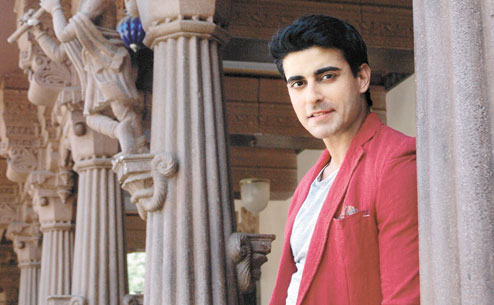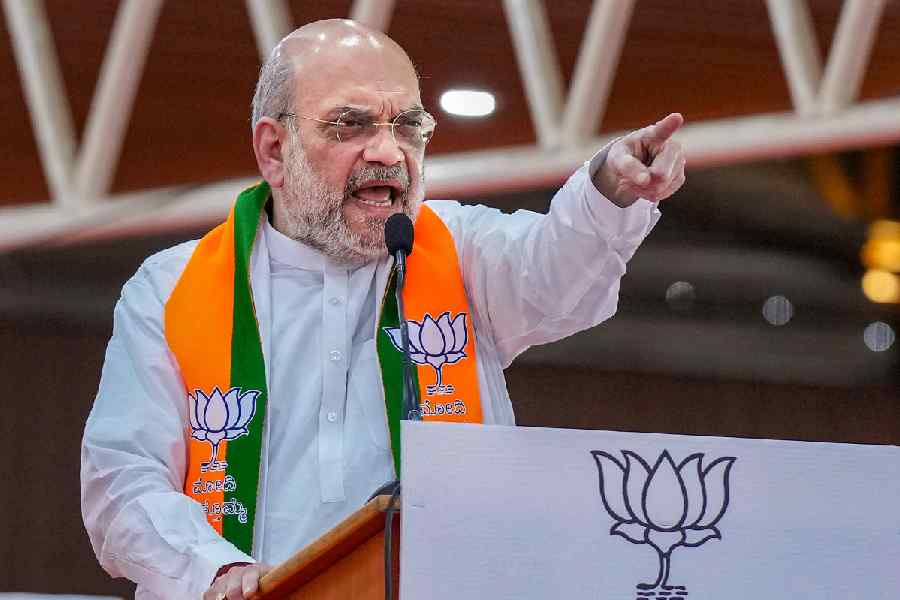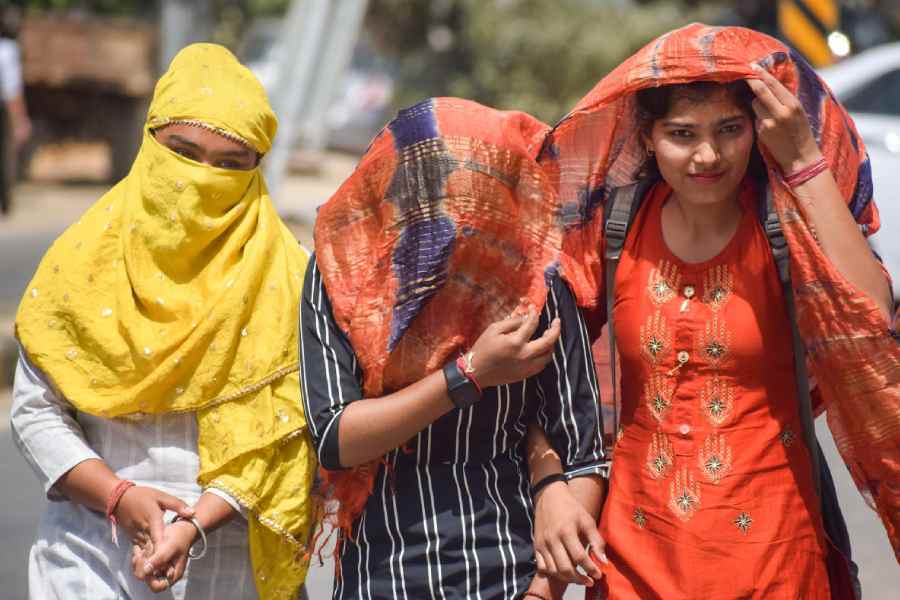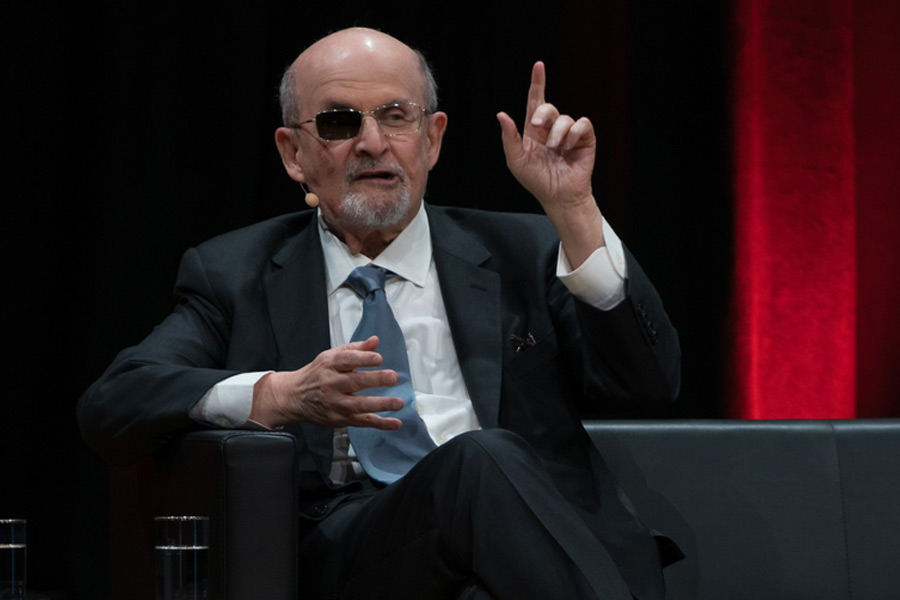-

Actor Gautam Rode on the sets of Saraswatichandra
It's a sprawling, lavish set that stretches over 5,000sqft in Mumbai's Film City. On the façade are gigantic columns topped with delicately-carved sculptures while there's an artificial lotus pond inside, along with living areas studded with Kutch-style glass mirrors. This Bollywood-flavoured set, which took 200 labourers seven months to construct, is the over-the-top scene of action of Saraswatichandra, the recently launched mega-television series on Star Plus produced by Sanjay Leela Bhansali. The price tag for this elaborate creation: Rs 5.5 crore.
A short drive away in Goregaon, another elaborate family saga is unfolding in an equally sumptuous setting. The producers of Colors' Bani - Ishq Da Kalma — a tale that centres on the Punjabi society's obsession with finding NRI bridegrooms — have splurged spectacularly on an unabashedly ornate mansion that's supposed to belong to one of the leading men. The 21,000-sqft set, which costs Rs 3.5 crore, includes sprawling gardens and indoor spaces with multi-layered chandeliers and expensive artwork. It's meant to be the type of luxurious residence that young girls in rural Punjab aspire to. 'To depict a way of living, the setting has to be larger than life,' says art director Tina Dharamsay.
The battle for TRPs has never been fiercer. And sprawling, big-budget soap operas are hoping to come out victorious by upping the ante and splurging heavily on extraordinarily elaborate sets or by taking cast and crew off to different corners of the globe. Also, they're spending heavily on better scripts and state-of-the-art special effects. 'Television is now bigger than films. In a week, the viewership for a TV series is greater than any 100-crore film,' says Gaurav Banerjee, executive vice president, network content engine fiction for Star India.
-
.jpg)
The set of Bani - Ishq Da Kalma in Mumbai, spread over 21,000sqft, flaunts lavish interiors and a highly-detailed façade
The fact is that television soap opera audiences have grown hugely in recent years. Says Banerjee: 'Three crore people watch Diya Aur Baati Hum (a Star Plus offering about a middle class girl's dream to become an IPS officer) every week and that's an astounding number.'
At the same time, with cable digitalisation bringing more cities under the digital umbrella, each household has more channels to watch too. 'With a basket of 600-700 channels now at the disposal of consumers, broadcast networks need to constantly provide innovative content,' says Nikhil Madhok, vice president, marketing, Star Plus.
In their quest for bigger audiences, the TV channels are following much the same path the Hindi film industry has been striding along for the last decade. So you have Sanskaar - Dharohar Apnon Ki from the Colors stable, which premiered in January, where about 50 episodes have sequences shot partially in New York and New Jersey. The story revolves around the dilemmas of a Gujarati youngster, Jaikishan Vaishnav, who goes to work abroad and ends up marrying an NRI girl.
'It's in the human nature to want variety. Shooting abroad offers audiences that variety,' says Swapna Waghmare Joshi, creative producer of the show, who insists that the international backdrops enhanced Sanskaar's dramatic narrative. Of course, there are complications to shooting abroad — it took Joshi and her co-producer more than eight weeks to get work permits for the US.
The producers insist that they never head off abroad just for the heck of it. For instance, in Saraswatichandra, the trip to the Gulf helps to establish the wealth of the lead characters. Saraswatichandra's father is a Dubai-based business tycoon, and the family is shown in locations like Al Mamzar Park and the Burj Khalifa. The title role, played by TV actor Gautam Rode, shuttles between the Gulf and India.
Also breaking the monotone of endless indoors-only sequences was Bade Achhe Lagte Hain (on Sony), an Ekta Kapoor show, which had sections shot in Australia with lead couple Ram Kapoor and Sakshi Tanwar doing the rounds of the Sydney Cricket Ground, the Opera House and The Three Sisters rock formation in New South Wales. Another biggie from Star Plus, Saath Nibhaana Saathiya, also ratcheted up
-
.jpg)
Sanskaar - Dharohar Apnon Ki has been shot extensively in New York and New Jersey
its glamour quotient by throwing in sequences in Switzerland, shooting at tourist hot spots like the Lake Geneva region, Ticino and Lucerne.
But the programme that has surpassed them all by heading off for three months to Birmingham and London is Rab Se Sona Isshq, currently beaming on Zee TV. The soap, which explores the aspirations of Punjabi youth and their dreams of going abroad, is filmed around bistros, museums, galleries, opera-houses and other landmarks of the British capital.
Producers are using other tricks to cut through the channel clutter too. Some are breaking fresh ground by using cutting-edge computer generated imagery (CGI) in the fantasy and mythology genres. 'CGI helps us generate completely unreal backdrops for our divine characters and create impactful visuals,' says Nikhil Sinha, producer of mega fantasy series Devon ke Dev ... Mahadev that showcases legends woven around Lord Shiva. Sinha has created snow-capped mountains, lethal weaponry and cataclysmic battle sequences with the help of Vertex Volt, a premium VFX and animation service provider.
-
.jpg)
Kailash Parbat, the abode of Lord Shiva, is changed and enhanced with computer-generated imagery for every episode of Devon ke Dev ... Mahadev
While Devon ke Dev... focuses on a rippling-muscle, bare-chested Shiva and his exploits, Savitri, another primetime entertainer, deals with the subjects of reincarnation, the quest for immortality and other paranormal elements. 'The series requires a 60-member graphics team working round the clock to create sequences involving shape-shifting witches and aerial fights between the hero and the devil,' says Ajit Thakur, general manager, Life OK, which airs Devon ke Dev... and Savitri.
Both the shows are shot against a green background known as a chroma screen, which gets replaced with computer-generated landscapes in almost every episode. 'In a brick-and-mortar set, you can't create too much variation in terms of background. But with chroma, you can play around,' says Thakur. In fact, Kailash Parbat, Mahadev's abode, is changed every time it appears on screen.
As might be expected, visuals that conjure up magical realms come at a steep price. Top-notch, computer-animated sequences cost anywhere between Rs 50,000 for a two-minute stint and Rs 10 lakh for lengthy and complex sequences, per episode, says Sinha.
-
.jpg)
Savitri, which deals with reincarnation, immortality and paranormal elements, has a 60-member graphics team for its special effects
Yet the fact is that channel executives — once the most tight-fisted people in the entertainment industry — aren't worried about splurging. And with good reason — television soaps are making more money than ever before.
That's partly because cable and satellite television has stretched its tentacles across the country and now reaches 150 million households, touching the lives of almost 700 million people. This means that advertising and subscription revenues are growing.
In fact, TV companies are earning tidy sums from the overseas market. That's also why they are trying to attract international audiences to boost sales. 'The core idea in Rab Se... is to train the spotlight on the dynamics of NRI existence. In England, we also got lots of local talent playing cameos. This resonated with our UK viewers and familiarised domestic audiences with newer issues,' says Ajay Bhalwankar, content head (Hindi GEC), Zee Entertainment, which has a footprint in nearly 183 nations.
Syndication of content too has added to the television networks' revenue kitty. For instance, Star Plus not only beams to 100 countries but has also syndicated a whole bunch of its shows to private producers and broadcasters abroad. Two of its current soaps, Saraswatichandra and Pyaar Ka Dard Hai Meetha Meetha Pyaara Pyaara, are doing really well in the UK and the rest of Europe.
-
.jpg)
Saraswatichandra's sprawling set took seven months to build and had around 200 people working on it at various stages
Colors, too, has syndicated shows like Balika Vadhu and Uttaran in more than 20 countries, where they're being dubbed in over 15 languages. 'The encouraging part is that these are not necessarily catering to the Indian Diaspora; in many cases our shows are being dubbed for mainstream
audiences,' says Vivek Srivastava, head, digital and business operations, Colors.
This has also resulted in new markets opening up. For instance, KISS TV, a leading African GEC has acquired the story of the Colors super-hit Uttaran and adapted it in Swahili. 'Already, 30 episodes have been shot with local actors,' says Gaurav Gandhi, COO, IndiaCast, a company that distributes channels like Colors, MTV and CNBC across the globe. The Swahili adaptation is set to run in countries like Botswana, Uganda, Kenya and Senegal.
Meanwhile, back home too, as cable and satellite penetration has increased from 50 per cent in 2002 to 91 per cent, domestic viewers are demanding more bang for their buck.
-
.jpg)
The cast and crew of Rab Se Sona Isshq spent three months shooting in England and even hired local talent to play small roles in the show
To cater to such rising expectations, Saraswatichandra's sets are reminiscent of Bhansali's visually intoxicating movies. The residence of the lead actress Kumud, for instance, is a Gujarati haveli with extravagant latticework and glittering mirror-studded walls. The centrepiece is a picturesque pond where full-bloomed lotuses can be seen floating around. 'There's one beautifully shot scene where Kumud dives into the pond to search for her pearl ring,' says set designer Jayant Deshmukh.
The mega-soaps are moving aggressively in the domain of music too. Once upon a time, there was hardly any original music on the small screen beyond the background score. All that's changing. Zee TV's Rab Se Sona Isshq has four original songs as well as recreations of Sufi compositions of Bulleh Shah, Reshma and Abida Parveen.
Similarly, Star Plus has roped in hit composer Ismail Durbar to score the music for its soon-to-be-launched behemoth production Mahabharat.
The producers and channels are ready to spend big bucks because they're eager to tap into a rapidly changing market. 'Ad sales revenues are seeing a double digit growth,' says Srivastava. And while digital revenues are a small percentage of the pie now, they're growing too. 'In the next three years, we expect digital to contribute around seven to 10 per cent of the channel's revenue,' he says.
This only means that the viewers will turn into bigger consumers of content. And that spells good news for broadcasters of quality programmes.











